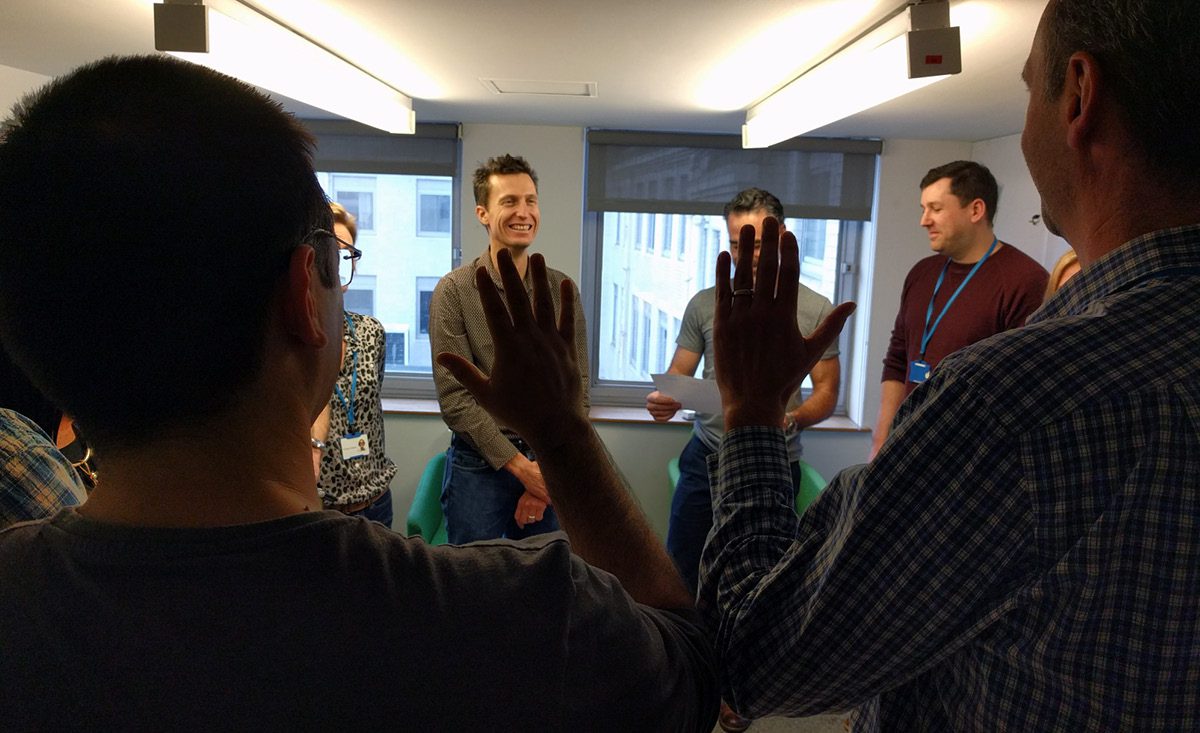Our Thinking Wed 2nd December, 2015
10:10:10 – standing-up for cross-team success
“10 minutes, everyday at 10:10. If you can’t come then send a representative”.
These are some of the first words a new delivery lead will hear when joining us at the digital delivery centre of one of our Government clients. This is when the cross-team stand up takes place – and it’s become the delivery centre’s heartbeat.
The stand up provides each team with the opportunity to catch up with the other teams within the delivery centre. It’s a daily chance to meet in person and resolve any blockers or impediments stopping progress. Generally, it’s along the lines of “we raised a support ticket yesterday but haven’t heard anything back, can you provide an update?” – pretty simple stuff. But making sure we have this session every day makes sure it happens – and provides a sense of tempo that helps us get things done.
One of the biggest benefits of 10:10:10 has been the increase in co-operation it’s encouraged. It’s now common to hear requests like “could someone help facilitate my team’s retrospective?” or “our designer’s off sick today, could another team help us for a couple of hours?”
How we made it work
The benefits of this set up are clear, but there are challenges in making it work for a large, disparate set of teams (we have around 12). The design of the delivery centre is based around minimising dependencies between teams;this enables greater independence but can make a daily meeting seem less relevant.
We solved this challenge by sharing the value that we each gain from other teams’ updates. Hearing about celebrations (“our new feature went live in production”) and news that the teams consider relevant to others creates a wider sense of progress and motivation. And raising any issues that can be addressed by other teams (“any update on the infrastructure issues around the staging environment?”) helps to resolve problems faster.
Still, the key change in making these sessions work was to encourage people not to give an update unless it’s relevant. We explicitly made it safe to say “no update from me today” rather than give the kind of activity-based update like “I was busy today” that can have less value for other teams.
We made some structural changes too:
- We deliberately shifted from 15 minutes to 10 minutes to ensure that the meeting keeps its pace and is relevant for everyone to attend.
- We use the ‘two hand rule’ to signal if we think the discussion is going on too long and would be better left for debate outside the meeting. This allows us to ‘tune’ the meeting as a group, and collectively come to an idea of what works well for everyone.
- We changed the assumption that everything needs to happen in the meeting. Instead, we use the moments after the meeting to have discussions with smaller, more specific groups. People are comfortable asking “Can I catch up with team X, Y and Z straight after we finish?”
- If someone doesn’t turn up, we talk to the team involved and describe the impact it had. This helps each participant realise their input is worthwhile and needed. It’s now common to see people running to the meeting because they know it starts exactly on time (and, of course, to see people turning up in good time!).
If you have multiple teams that need to coordinate, I can really recommend this approach.



